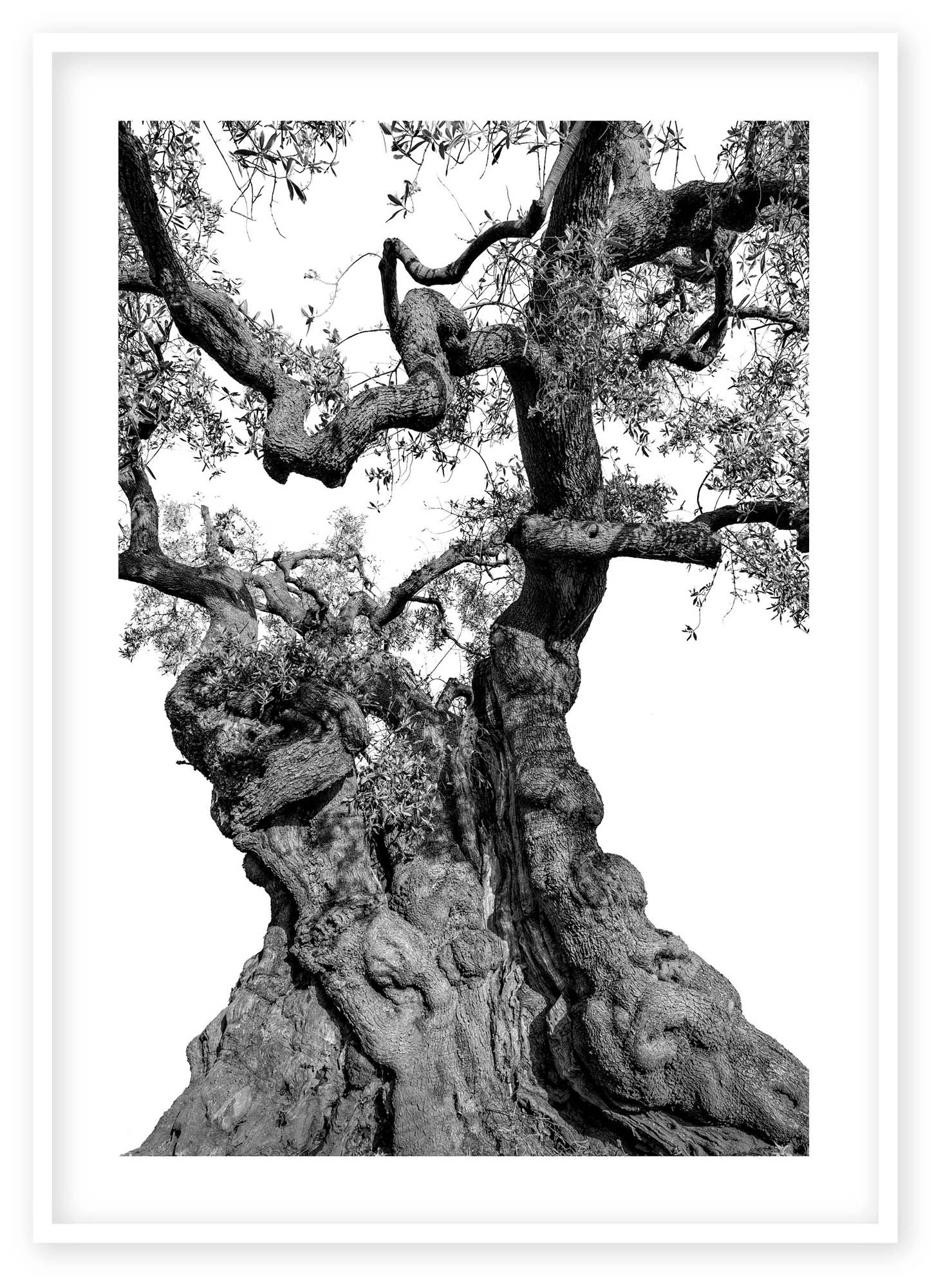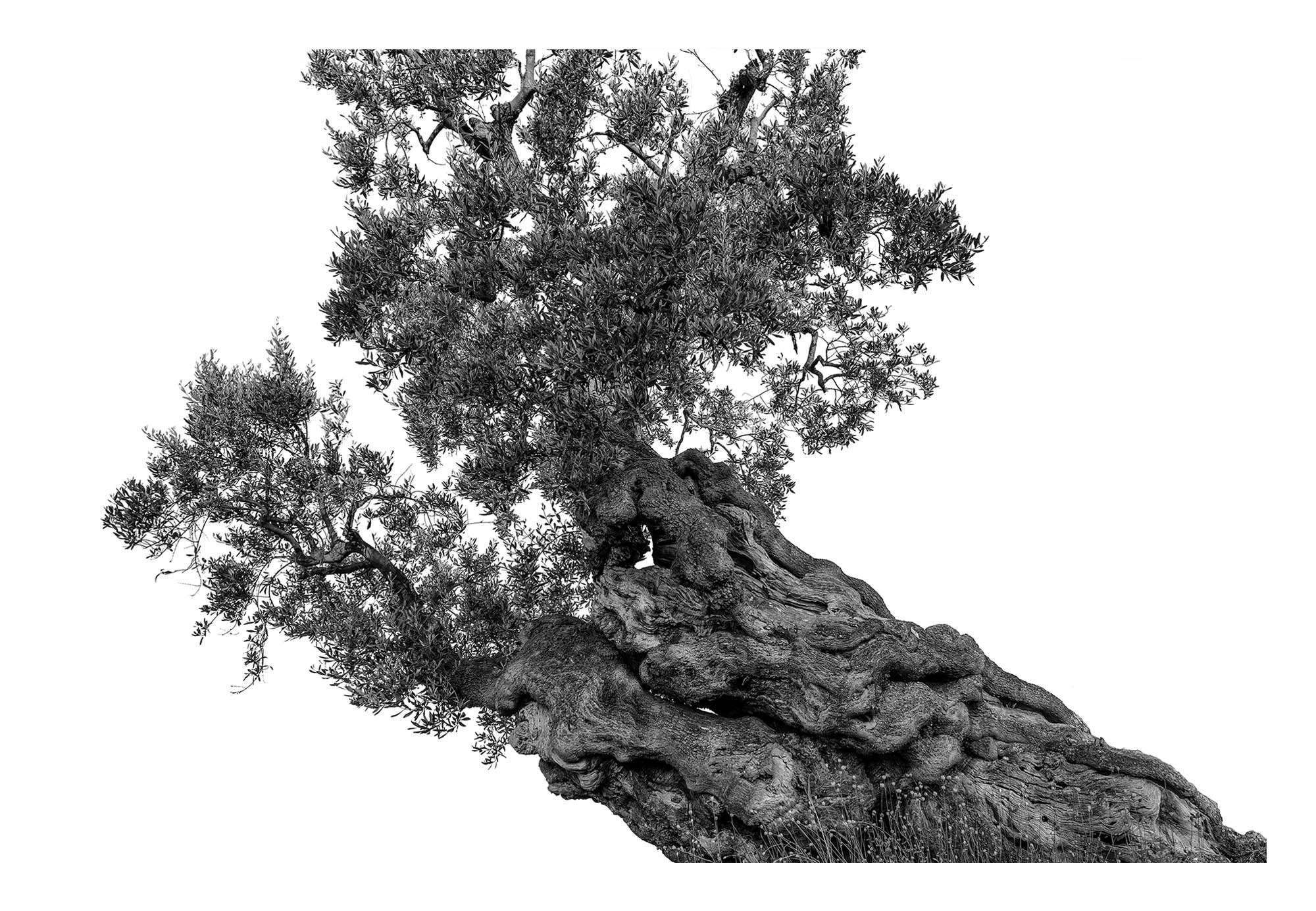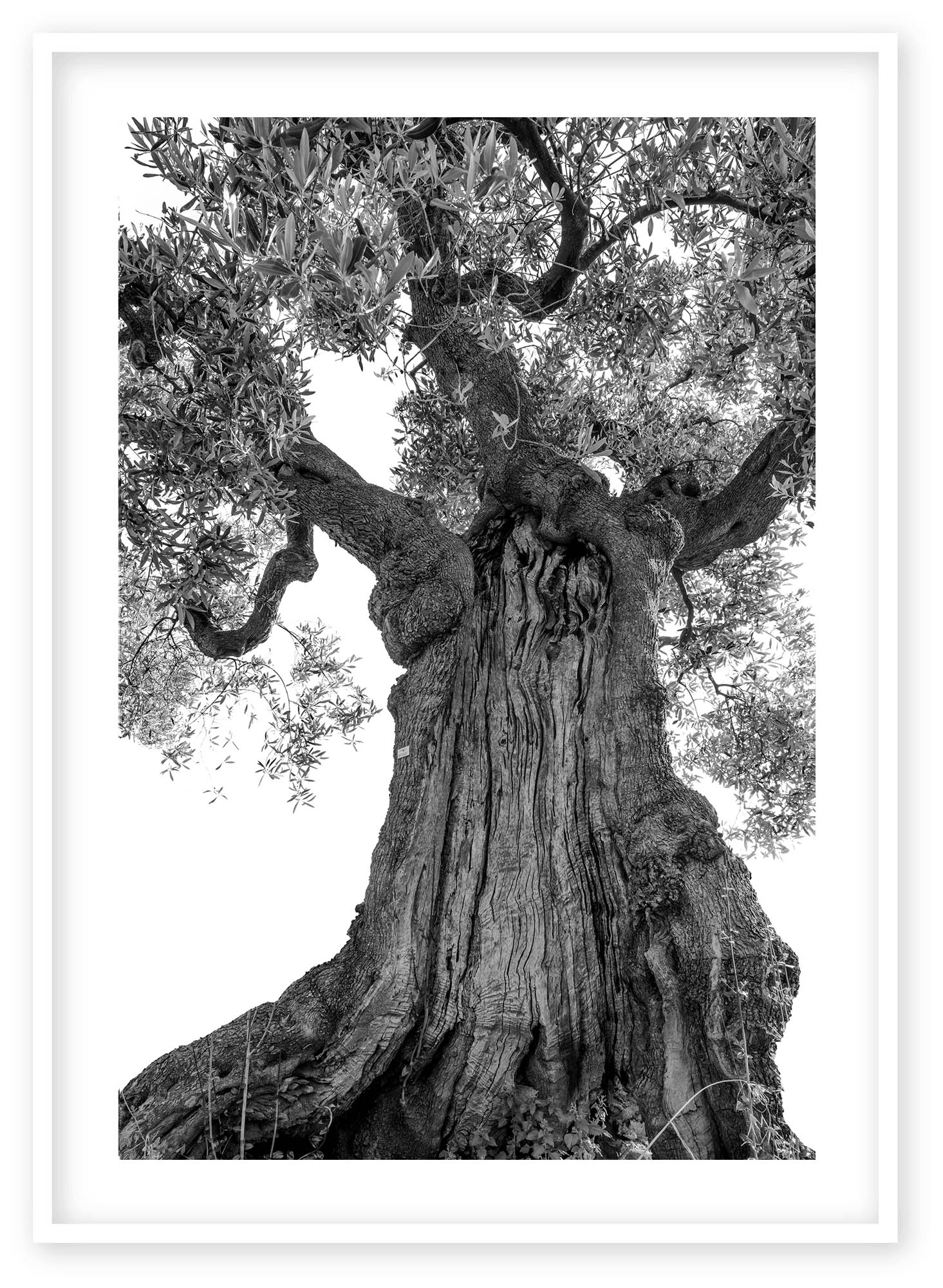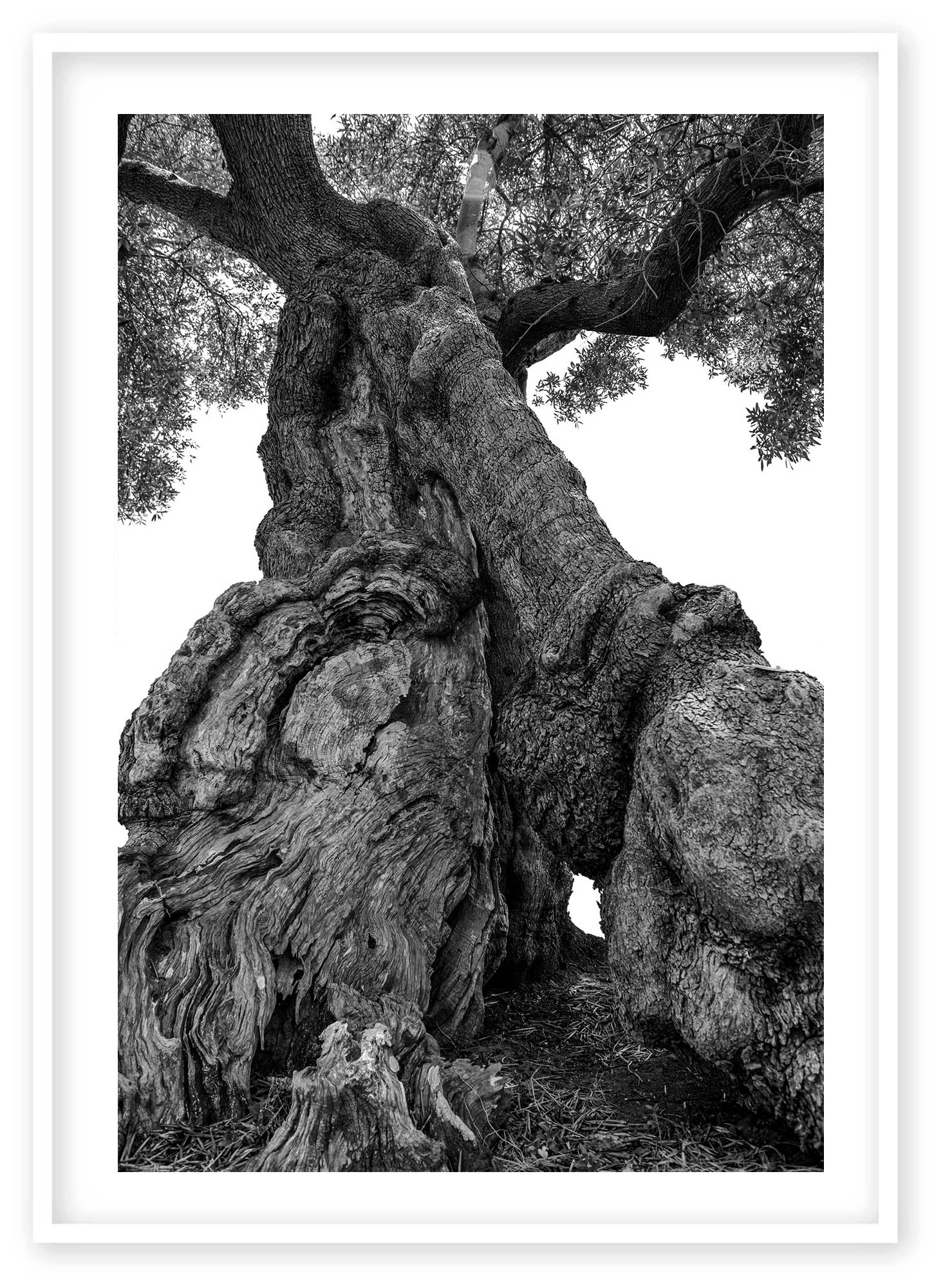Monumentali
Martin Ogolter travelled to Apulia in southern Italy where some fo the oldest olive trees in the world are at home. Some of these "Monumentali", as the locals call them, are a couple of thousand years old and through pruning, the cutting of branches, and the elements, each tree takes on a specific form. These sculptural trunks made by man and nature in tandem makes for spectacular ecological marvels. Ogolter photographed hundreds of these trees for the project and is gradually eraseing their environment to even more enhance their sculptural quality. As this process is highly labour intensive, there is only a certain amount of trees that can be finished a year.
The geographical location of these trees is not without significanceas they are situated at the far end of the Via Apia, latin for the queen of roads, which has had its fame since antiquity. The Romans shipped out to the eastern mediterranean from Brindisi, the city at the end of Via Apia, as did the knights heading for Palestine during the Crusades, some of these trees were around for all of this and through the oil of their fruit even fueled events.
The arrangement in grids and groups reminds us of the industrial photography of the Bechers and others of the early period of conceptual photography. But here we are not talking about industrial archeology as with the Bechers work but more of the individuality of these guardians of time while still being part of a group.
Monumentali
Martin Ogolter viajou para a Apúlia, no sul da Itália, onde algumas das oliveiras mais antigas do mundo estão em casa. Algumas dessas "Monumentali", como os moradores locais as chamam, têm alguns milhares de anos e, por meio da poda, do corte de galhos e dos elementos, cada árvore assume uma forma específica. Esses troncos esculturais feitos pelo homem e pela natureza em conjunto criam maravilhas ecológicas espetaculares. Ogolter fotografou centenas dessas árvores para o projeto e está gradualmente apagando seu ambiente para melhorar ainda mais sua qualidade escultural. Como esse processo é altamente trabalhoso, há apenas uma certa quantidade de árvores que podem ser finalizadas por ano.
A localização geográfica dessas árvores não é sem importância, pois estão situadas no extremo da Via Apia, latim para a rainha das estradas, que tem sua fama desde a antiguidade. Os romanos embarcaram para o Mediterrâneo oriental de Brindisi, a cidade no final da Via Apia, assim como os cavaleiros que se dirigiam para a Palestina durante as Cruzadas, algumas dessas árvores estavam por perto durante tudo isso e, por meio do óleo de seus frutos, até mesmo alimentaram eventos.
O arranjo em grades e grupos nos lembra da fotografia industrial dos Bechers e outros do período inicial da fotografia conceitual. Mas aqui não estamos falando de arqueologia industrial como no trabalho dos Bechers, mas mais da individualidade desses guardiões do tempo, embora ainda sejam parte de um grupo.

Monumentali, 16 archival pigment prints, 30x40cm each"

Monumentali, archival pigment print, 120x180 cm"

Monumentali, archival pigment print, 120x180 cm "

Monumentali, archival pigment print, 150x100 cm"

Monumentali, archival pigment print, 180x120 cm "

Monumentali installation view, archival pigment print,200x130 cm"

Monumentali, archival pigment print, 180x120cm"

Monumentali, 9 archival pigment prints, 30x40cm each"

Monumentali, archival pigment print, 120x180cm "

Monumentali, archival pigment print, 120x180cm "

Monumentali, 16 archival pigment prints, 30x40 cm each"
Monumentali Broadsheet 44 pages